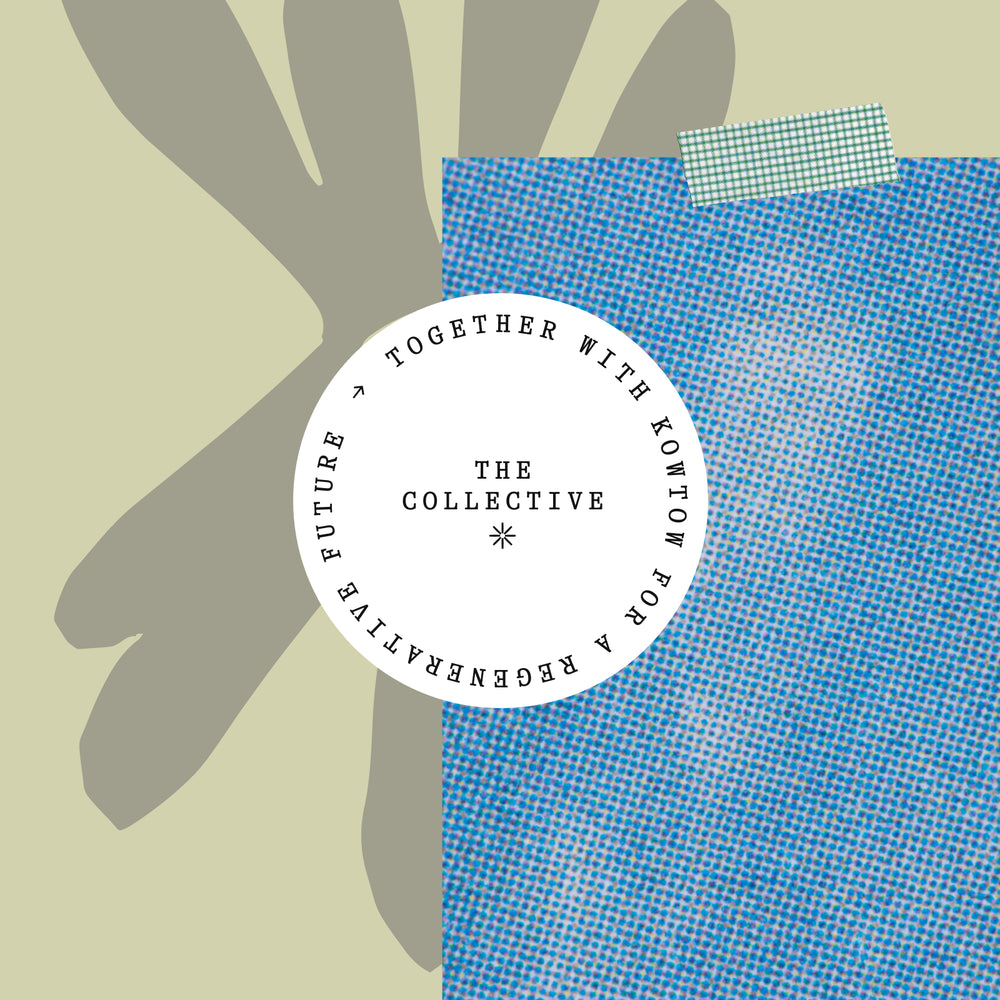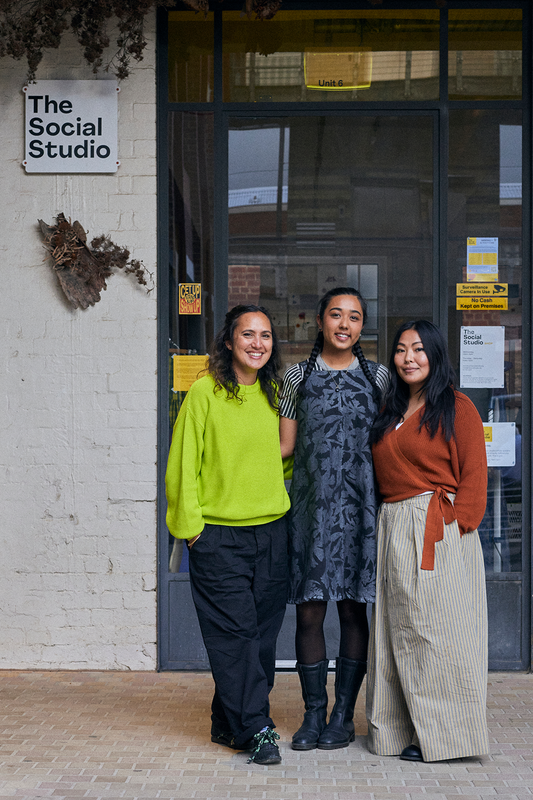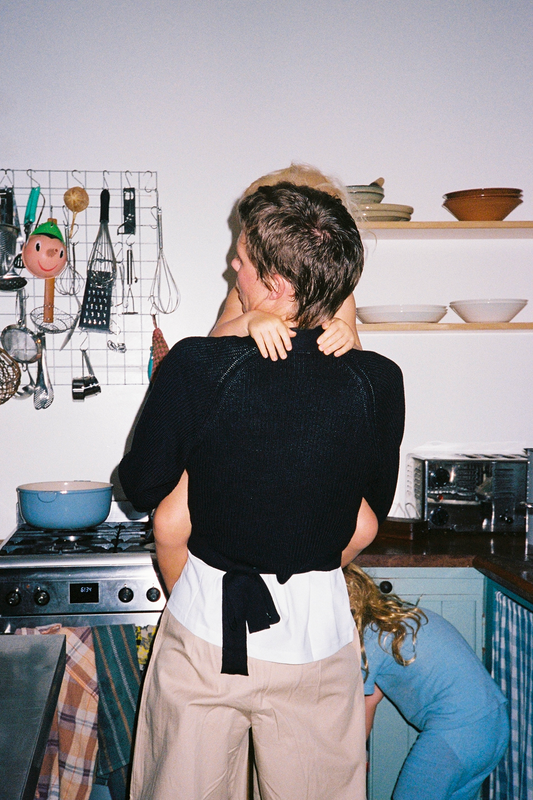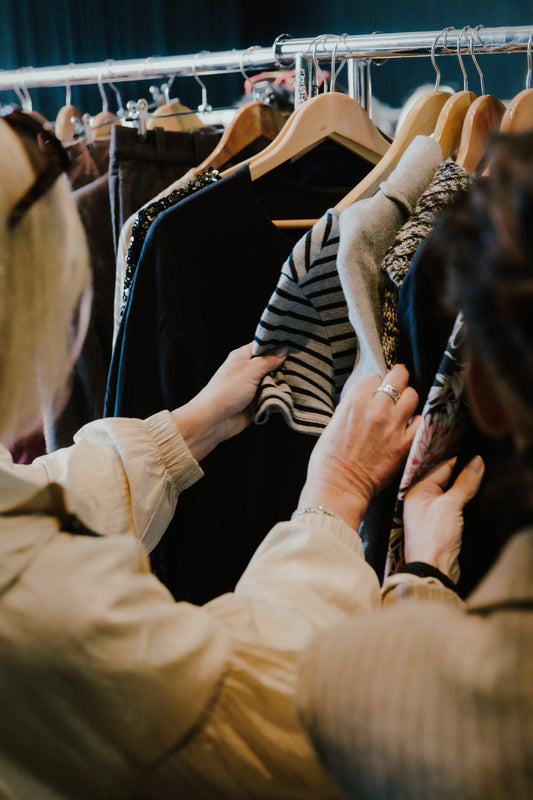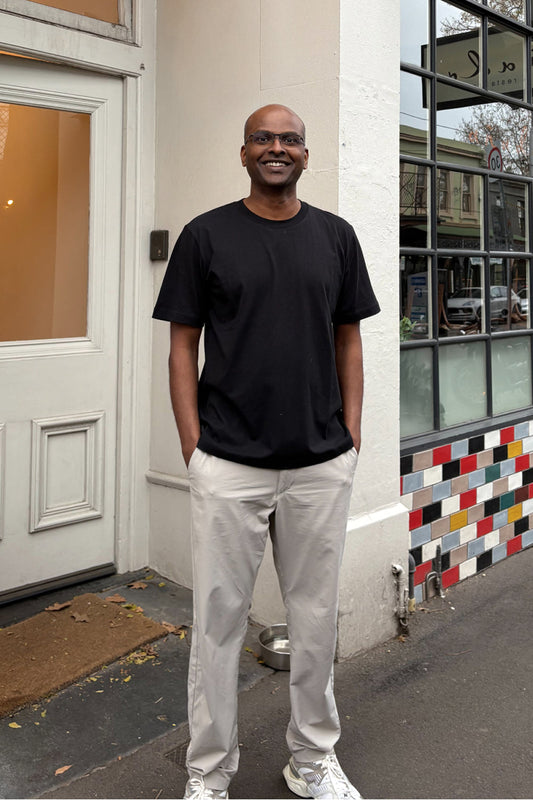My passion — and what I’m doing with KOWTOW — is entering deeply into a production chain: delving into understanding how a product is made, who is involved, and what materials are used; showing immense curiosity as to what sustainability and ethical practice mean, and taking positive action to most honestly translate this process into product.
Similarly, what I love and find fascinating in Jamie McLellan’s journey as Head of Design at ALLBIRDS is the development of their product using such innovative and concise materials — with sustainability as the driving force from design conception to execution. Looking to the furniture design practice of Simon James, I admire his use of clean lines and resonate with the product as an aesthetic reference point on an international level. In turning wood into contemporary furniture — with commercial success — Simon has created a product with longevity beyond that of clothing or footwear.
In a market cluttered by products manufactured without regard for ethical concerns or sustainability, making headway as a business requires a balancing of values in combination with aesthetic and commercial viability. The synergy between KOWTOW, ALLBIRDS and SIMON JAMES, lies in our shared exploration of materiality, desirability and sustainability — and how these elements converge to create something of integrity.
GP – To begin with you, Simon, where do you start when considering the sustainability of your product?
SIMON JAMES – We’re in a position where we can make a product last a lifetime if we get it right. That’s the ultimate for us. A lot of the other concerns that come with sustainability — especially with furniture in terms of what happens with its recycling, post-use, or circularity — can be approached in a much better way if, say, a dining table can last for a generation or two.
GP – I love the idea of longevity as a sustainable solution. Another thing I find really interesting is the idea of material choice. At Kowtow, we’re restricting our palette more and more. As of this year, we will be using only Fairtrade certified organic cotton — we’re eliminating all other fibres. This was the next step for us, and when I think about the role materials play in striving for sustainability, I think of Allbirds. So, tell me about the shoe Jamie. No one’s made a woollen performance shoe before. It’s revolutionary. What about the materials used for the sole, the inner, and the laces — how did you do all that?
JAMIE MCLELLAN – Well, we’ve grown from having just a single Wool Runner to a range of products all using our suite of hero materials - Wool, Tree and Sugar - as well as a cast of supporting materials such as bio-based TPU, bio-nylon, recycled laces, toluene-free glue, etc. With the original Wool Runner, there was kind of three parts to it: we had the wool material, and a castor bean foam we used for the sock liner, but we also had this foam on the outside that was still a petrochemical-derived material. So there was one-third of the equation that we needed to address. That was a huge priority from the beginning of the company, trying to figure out how we could solve that EVA foam situation. The solution we developed is called SweetFoam, which alludes to the sugar it came from. Its development was a huge evolution on a molecular level of engineering.
GP – It’s amazing to see the place that ambitious material development can have in creating products that tread more lightly on our planet. How do materials come into play for you in your practice, Simon?
SJ – Talking about a dining table, it would be: where is the wood from? Is it plantation-grown? And, how does it get to New Zealand? It’s hard, there’s only one kind of hardwood in New Zealand that’s used for furniture manufacture. So we research into that, and the glues we use, and then the finishing of the timber. For me, timber looks its best when it’s unfinished, but that isn’t always practical.
GP – And working with furniture as opposed to apparel, I’d be interested to hear how you approach environmental standards and certifications. Is this a straightforward process for you, or does it come with challenges?
SJ – Not being a large company, we rely on what’s available to us. We’re pushing as much as we can to offer a product that has a better environmental standard. The environmental standards for furniture in this country are a bit broken. At the moment, if I want to get a product certified, it has to be done by a third-party. They take a percentage of sales, and the product can’t be customised really from where it started, which for us is a key point of difference in what we do — we customise what we make. So for us, it’s about looking at key products. What happens to things like off-cuts from the frame-making of our furniture, for example, which goes into making sawdust for potting mix. There are all these other little channels and stories that happen as a result.
GP – We think about this a lot because we have a lot of certifications, but in the end it has to come down to common sense and what you see in front of you. Yes, you can have certifications, and that’s great because you have independent bodies that audit — but sometimes you can see the flaws right there, in your production chain. So you make your own decision based on your ethics and values, and what you’re able to change. Is that what you’re saying?
SJ – Yeah, we don’t mass-produce a small range of products; we make a lot of different products in small production runs. And so we take a look at ourselves really, and see what we can do rather than getting someone else to — the current setup just doesn’t apply to what we do. It’s flawed.
GP – It’s true, and we need to be critical of these systems as we navigate them, and when necessary, devise our own solutions outside the available frameworks. It’s interesting going from a company that is 20 years old, to one that’s much younger. You are both quite concise in what you’re doing. How did the journey with Allbirds begin for you, Jamie?
JM – Tim Brown walked into my studio in 2010 or 2011 with a piece of wool felt developed for the police force or military — it was a kevlar woven stab-proof wool. He saw an opportunity to make a performance shoe out of a natural material, and he wanted some help with that. From the very early days, I naïvely thought ‘how hard could it be to make a pair of shoes?’, so I offered to help out and took it on as a fascinating project. It became apparent that it’s really hard to make things that fit on the body — as you know — it’s a whole different spatial dimension, and it was a long long journey. Tim and I worked on the footwear like a piece of furniture — stripped stuff away, and tried to understand the engineering and celebrate the materiality. it wasn’t an exercise in fashion or expression, it was about celebrating this wondrous wool material that was strong and super comfortable.
GP – It’s interesting to see that Allbirds have gone into fashion now.
JM – Yeah, I think if we want to make a meaningful difference, we have to go as far and wide as possible. And we’re trying to do that with a concise palette and materials. It’s something I’ve had to contend with, because my answer to sustainability before I came to America and joined Allbirds full time, was to be small and niche and build the world around me. But what unlocked for me was realising that commercial success and scale can be a power for good. If we can get the product to the point where the more we sell, the more carbon we can sequester, then that can only be a good thing for what we believe is the existential crisis of our lifetime — climate change.
GP – Absolutely. One of the ways we’re looking to address our responsibilities in the face of climate change is by exploring models of circularity. How do you approach this at Allbirds — have you ever considered creating a biodegradable product?
JM – We have a sustainability team that is looking into all sorts of options. It’s interesting you raise it, there are a couple of things, which for me as a designer, have been super enlightening. One of the biggest learnings has been the importance of addressing the product creation process’s front end to reduce carbon significantly, asking: where do we extract raw materials from and how do we process and assemble them? It’s still really important that we think about end of life, but it is a very small component of a product’s total carbon footprint.
GP – Yeah, we had a regenerated nylon swimwear range with a lycra component. But because of the lycra, it can’t be infinitely recyclable, so we had to make a value-based decision to stop manufacturing it, even though commercially it was a successful line. Our circularity mission has really made us stop and think about the materials we use.
SJ – We offer a product stewardship scheme for more corporate clients who want to refurbish their office, we take the product back, break it down and either reuse or recycle.
GP – Circularity is a goal of evolution. Like sustainability, it’s not a destination, but a journey with a lot of questions.
SJ – Yeah, I think Jamie touched on an interesting point that the environmental cost is still being gauged, so understanding it in 10 years on we’ll have to ask whether it is still the right thing to do?
GP – Yeah, and I think we have to partner-up, the idea of doing it yourself only works in the interim. Then you have to partner with people who are coming up with solutions on a global scale. These are all important questions to be asking and working through, because we are keeping the industry accountable, you know?
ABOUT THE SPEAKERS
In 2006, Gosia Piatek founded Kowtow, an organic cotton and fair trade clothing brand. Gosia believes that clothing is a vessel for a much bigger concept towards a healthier planet and a fairer world. Determined to create a positive environmental contribution, Kowtow works with nature to provide people with a natural and circular clothing solution, whilst working in sustainability and innovation.
@gosia_piatek_
Wellington, New Zealand & London, United Kingdom
Jamie McLellan set up his own product and furniture design consultancy based in Auckland, New Zealand. His clients included established global brands such as Cathay Pacific, Neil Pryde and Tom Dixon, along with innovative start-ups like Bodha, Resident, and Allbirds, which he ultimately joined as the brand’s first Head of Design.
@jamiemclellan
Auckland, New Zealand & San Francisco, United States of America
Simon James infuses character into clean, uncomplicated forms. Having founded his eponymous brand in 2001, Simon’s appreciation of craftsmanship continues to deepen as he explores material tactility in new and exciting ways. His design approach is largely intuitive, with people and their experiences of a space a central focus for him.
@simonjamesstore
Auckland, New Zealand
